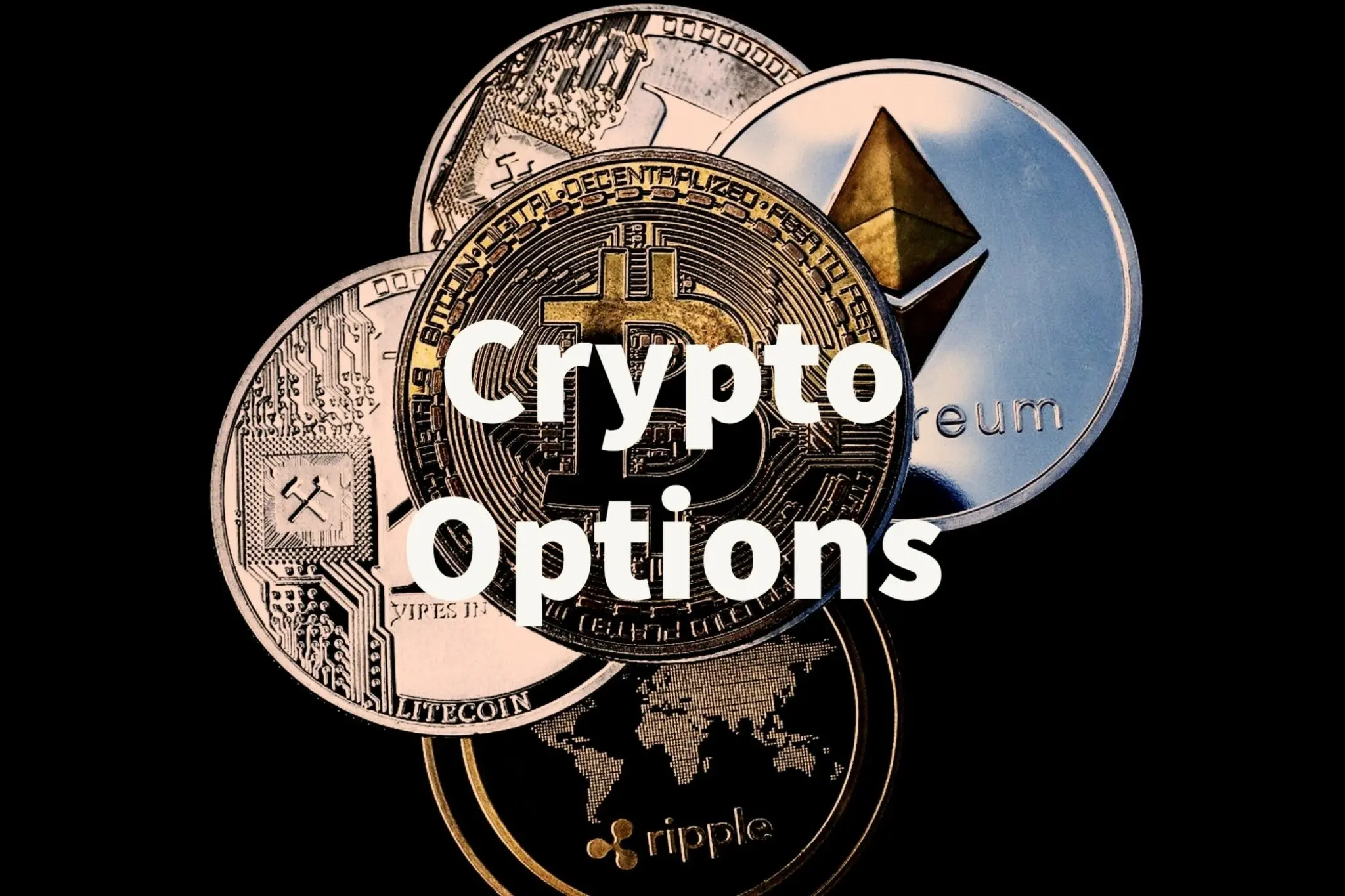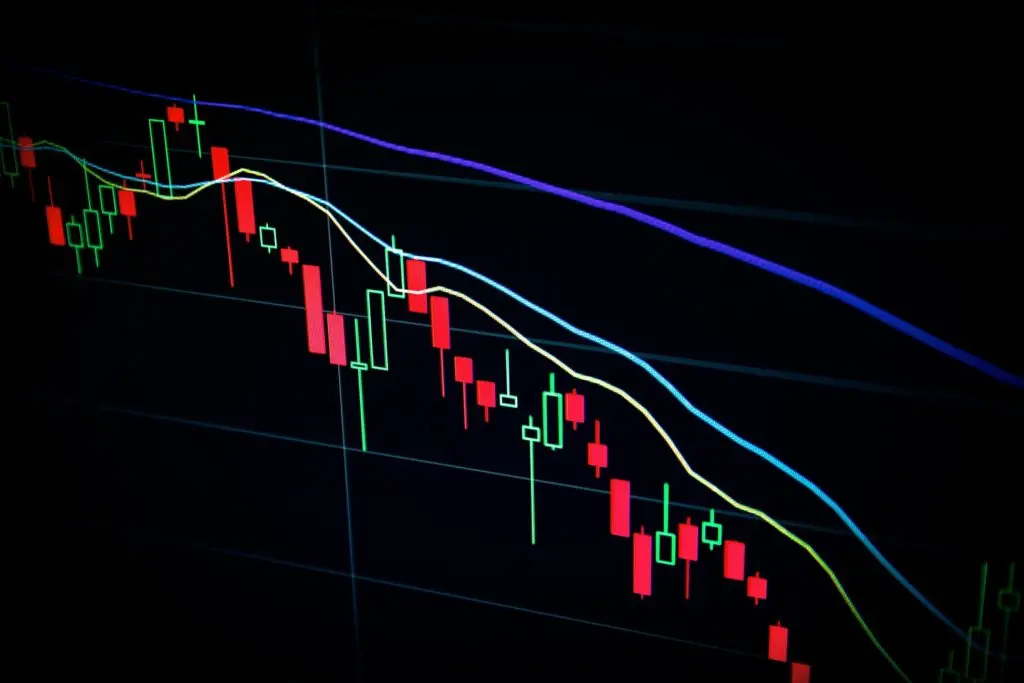Crypto options are fascinating financial instruments that give you the ability to buy or sell cryptocurrencies at a specific price on a predetermined date.
These options usually expire on the last Friday of each month, although some platforms may have weekly expirations.
The expiry of these options can lead to significant changes in the crypto market, affecting prices and trading strategies.
Understanding how options expiry impacts price can be crucial for your trading decisions.
When options expire, traders often adjust their positions, which can cause increased price fluctuations.
This is especially true when large amounts of options are expiring simultaneously, as traders might rapidly buy or sell to manage their exposure.
The influence of option expiry on crypto prices can sometimes lead to the “pinning effect,” where the price of an asset gravitates toward a specific level as contracts close.
Being aware of these patterns can help you anticipate and navigate the market more effectively, potentially giving you an edge in your trading strategy.
Understanding Crypto Options

Crypto options are financial contracts tied to cryptocurrencies like Bitcoin. These contracts give you the right, but not the obligation, to buy or sell the underlying asset at a set price before a certain date.
Key Components:
- Strike Price: The price at which you can buy or sell the asset.
- Expiration Date: The date the option contract ends.
Crypto options can be bought and sold on various exchanges. They are similar to traditional options but involve cryptocurrencies, which can be more volatile.
Options can be used to hedge against price changes or to speculate on future movements. They provide flexibility in trading because you can choose not to exercise if it’s not profitable.
Types of Options:
- Call Option: Right to buy the asset.
- Put Option: Right to sell the asset.
You can use these options to capitalize on market trends, whether prices are moving up or down. Proper analysis is crucial to make decisions that suit your trading goals.
Expiration Time Frames of Crypto Options

Crypto options have various expiration time frames, significantly influencing trading strategies and market dynamics. The choice of expiry can affect both the risk level and potential gains for traders.
Daily Expiry
Daily expirations allow for frequent opportunities to adjust trading strategies quickly. They are ideal for traders who prefer short-term engagements and are comfortable with rapid changes.
Daily options can be risky due to their volatile nature. Traders must react swiftly to market shifts since these options expire every 24 hours.
The fast pace may appeal to advanced traders who thrive in fast-moving markets.
While these may offer higher potential returns, they also demand greater attention to detail and quick decision-making skills.
Weekly Expiry
Weekly expirations offer a balance between daily and longer-term options. They provide more stability than daily expiries, appealing to those who prefer not to trade every day.
They allow you to take a slightly longer view on market trends. Weekly options give more time to react to price movements while still benefiting from short-term changes.
Weekly expiries can serve as a bridge for traders looking to transition between daily and monthly trading.
They provide the opportunity to manage risk more effectively and to tweak strategies according to weekly market trends.
Monthly Expiry
Monthly options typically align with the end of each calendar month. They provide ample time for traders to plan and execute their strategies.
The extended timeframe allows for a more thoughtful approach to market developments.
These options are popular among traders who focus on medium-term trends.
They provide a buffer against daily market fluctuations, reducing the need for constant market monitoring.
Monthly expiries are often used as part of long-term investment strategies. They can offer a balance between risk management and potential return, making them appealing to both new and experienced traders.
Quarterly Expiry
Quarterly expirations align with traditional financial quarters, offering a longer-term perspective. They are often part of strategic planning for institutional investors who look at broader market trends.
This timeframe allows for comprehensive analysis and alignment with corporate earnings schedules and economic cycles.
Quarterly options suit traders with a focus on macroeconomic factors and long-term forecasts. They provide more substantial potential gains, compensating for the longer waiting period.
These options appeal to traders who prefer not to engage in the daily hustle of the markets, offering instead a more measured approach to investing.
Mechanics of Crypto Options Expiry
Crypto options are contracts allowing you to buy or sell cryptocurrencies at a set price before a specific date. This date is known as the expiry. On this day, the options contract becomes invalid, and you must decide whether to execute the contract.
Calls and Puts
There are two types of options: call (buy) and put (sell). As the expiration date nears, you’ll choose to exercise your option or let it expire.
Expiration Cycle
Crypto options often expire monthly. This can create notable fluctuations in the price due to the decisions of many traders. Expiry days tend to have increased trading activity as contracts settle.
Impact on Price
The expiration can increase price movement. Big traders, also called “whales,” might influence the market by adjusting their positions based on upcoming expirations. This activity can result in short-term price volatility.
Strike Price
Each option has a strike price, which is the set price at which you can buy or sell the asset. As expiry approaches, the relationship between strike price and the actual market price affects decisions to exercise the option.
Trading Strategy Adjustments
You may need to adjust your strategies around expiry to account for potential price swings. Understanding the mechanics of expiry helps you anticipate and respond effectively to market changes.
Price Dynamics Before Options Expiry
Before options expiry, traders often see price shifts due to anticipated changes. The Max Pain Theory and Implied Volatility are crucial concepts to understand this behavior.
Max Pain Theory
The Max Pain Theory suggests that the price of a cryptocurrency often gravitates towards a level where options create the highest financial loss for option holders. This price point is known as the “max pain” point.
As options near expiry, price action might show a tendency to stabilize around this level.
This happens because option sellers, trying to minimize payouts, may execute trades to move the price closer to the max pain point. While not always precise, this theory helps explain stabilization patterns in prices.
Impact of Implied Volatility
Implied Volatility (IV) measures the market’s expectation of price fluctuations. Before options expiry, changes in IV can cause significant price movement.
High IV indicates greater expected volatility, impacting premiums on options.
When IV increases, it often leads to higher option prices, affecting trading decisions.
Similarly, a drop in IV might signal that lower volatility is expected, which could reduce options’ value. Monitoring IV provides insights into market sentiment and possible price actions as expiry nears.
Post-Expiry Price Behavior
After a Bitcoin options expiry, you may notice certain patterns in price behavior.
Sometimes, volatility increases as markets adjust. With many traders holding positions, the end of a contract can trigger sudden buying or selling actions.
You might see a drop in trading volume immediately after expiry. According to some studies, this decrease may persist for a few hours as traders reassess their strategies.
While some argue that there is little impact, short-term trends can still present trading opportunities.
It’s important to stay alert and make well-informed decisions during this period.
Potential price fluctuations vary. In the lead-up to expiry, the market often speculates on future prices. However, the actual impact can differ depending on the volume of contracts ending.
Explore these factors carefully. They can help you understand the nuances of Bitcoin options expiry and prepare you for any unexpected developments.
Strategic Considerations for Traders

When trading crypto options, it’s important to adjust positions before expiry and use effective hedging tactics. These strategies help manage risk and take advantage of market movements.
Adjusting Positions Before Expiry
Before expiration, you should assess your positions carefully.
Check the strike price and market price to decide if adjustments are needed.
If market conditions suggest a big move, consider closing or rolling over positions.
Rolling over involves moving a position’s expiry date further out. This can give more time to achieve desired outcomes without additional costs.
Sometimes, it might be wise to close a position early to minimize losses or lock in profits.
It’s crucial to stay informed about news or events that could impact prices. Setting alerts for certain price triggers can also be a helpful tactic.
Hedging Tactics
Hedging can protect your investments from adverse price movements.
One common method is using protective puts, where you buy a put option to safeguard your position in the underlying asset.
Another strategy is the covered call, where you sell call options against assets you hold. This can generate extra income while offering some downside protection.
Spreads, such as bull call spreads or bear put spreads, are also effective.
Spreads involve purchasing and selling options simultaneously to benefit from market conditions while limiting risk.
By applying these hedging techniques, you can stabilize your portfolio and manage uncertainties in crypto markets.
Market Sentiment and Expiry Cycles
Crypto options expiry can affect market mood by causing price and volatility changes. Options often expire monthly, and this can lead to quick price moves.
Traders pay close attention to these cycles because they can cause sharp price swings.
You may see increased trading volume and volatility as an expiry date nears. This is because traders might be closing positions or adjusting their strategies based on the upcoming expiry.
Market sentiment shifts when traders expect either bullish or bearish outcomes.
An increase in open interest before expiry can be seen as a strong signal of impending movement.
Key factors influencing sentiment include:
- Price movement before expiry
- Volume of open contracts
- Trader expectations
Such factors guide traders in making informed decisions.
The overall mood can swing from optimistic to cautious based on how these elements interact during expiry cycles.
In crypto markets, the impacts of these cycles are often more pronounced than in traditional markets.
This is due to the higher volatility and less predictable nature of digital assets.
Monitoring these cycles can better equip you to react to sudden market changes, helping you manage risks and seize opportunities.
Liquidity and Trading Volume Effects
When crypto options get closer to expiry, you’ll often see changes in liquidity and trading volume.
Liquidity can decrease, which means it might be harder to buy or sell options easily.
Out-of-the-money options are particularly affected, as traders usually avoid them when expiry approaches.
Trading volume and open interest play crucial roles in liquidity.
High volume often means better liquidity, allowing for smoother transactions, while low volume can lead to price inefficiencies.
Open interest represents the total number of outstanding option contracts.
With higher open interest, there is a greater likelihood of active trading and more stable liquidity.
Price changes are also influenced. As options expire, open positions are closed, which might cause sudden spikes or drops.
This is due to traders rushing to settle their positions to avoid unwanted exposure.
The time leading up to expiry often sees increased movement as traders adjust their holdings based on market sentiment and expectations.
The overall dynamics make it an exciting yet challenging period for crypto traders.
Regulatory Factors Influencing Options Expiry
Regulations play a significant role in how crypto options expire. Regulatory bodies, like the SEC in the United States, create rules that influence how these financial products function.
Different countries have varying rules, impacting the global market in unique ways.
Licensing requirements can vary by region. Regulators often require platforms to have licenses to operate legally, which can affect where options can be offered and when they expire.
This means some markets might see more trading activity than others.
Compliance with financial laws is another key factor. Exchanges must follow anti-money laundering (AML) and know your customer (KYC) regulations.
These rules affect the trading volume and could impact when and how options expire.
Tax policies can also influence expiry. If taxes on options trading are higher in one country, traders might engage less, affecting that market’s trading volume.
Tax season can also see shifts, as traders adjust their strategies to minimize liabilities.
Finally, regulatory changes or new policies can cause market volatility. If a country changes its stance on crypto regulations, it may affect options expiry and by extension, market price volatility.
Keeping an eye on regulatory announcements is critical for any serious crypto trader.
Historical Case Studies of Options Expiry
When you look back at the history of crypto options expiry, you see clear patterns emerge in how they impact the market.
One notable event was in June 2021. Bitcoin options worth billions expired, driving sharp fluctuations in price.
Traders were forced to make important decisions, leading to a brief period of increased volatility.
In March 2022, another large expiry saw 75,000 contracts come due. Market players closely monitored this, as its effect on prices was significant.
Both buyers and sellers adjusted their strategies accordingly.
Look at December 2022, where Ethereum options expiration saw $3 billion in contracts expiring. The market became volatile.
Price movements during this time led some traders to leverage the opportunity for gains, while others were caught off-guard.
Another interesting case took place in September 2023. Bitcoin futures expired along with options. This dual expiration had a notable impact, causing further price shifts.
By understanding these past events, you can gain insights into future market behaviors. Notice how factors such as timing and volume influence results.
Each expiry provides a learning moment, equipping you to handle similar situations.
Frequently Asked Questions
Bitcoin options have specific expiration dates that can impact market dynamics. Understanding these elements is key to grasping how options influence the broader crypto landscape.
What are the common expiration periods for Bitcoin options?
Bitcoin options typically have expiration periods ranging from weekly to monthly and quarterly. This offers traders flexibility in choosing contracts that match their strategies.
What is the impact of Bitcoin options expiry on market price?
Option expiry can lead to increased market volatility. Prices might fluctuate as traders adjust or close their positions, sometimes causing significant shifts in market sentiment.
What is ‘max pain’ in the context of BTC options expiry?
‘Max pain’ refers to the price point where the most options would expire worthless. This concept highlights where the most significant financial loss occurs for option holders, potentially influencing price movements.
How does the expiration of options affect crypto trading strategies?
Traders might adjust their strategies around expiration times to minimize risk or maximize gains. Expiry can influence decisions on opening, closing, or holding positions.
Are there specific times of day when Bitcoin options commonly expire?
Bitcoin options often expire at the end of the trading day, which is typically 4 p.m. UTC for many exchanges. This timing aligns with global market practices.
Are Bitcoin options typically settled in cash or physical delivery?
Most Bitcoin options are settled in cash. This means traders receive the equivalent value rather than the physical asset.
This is common in the cryptocurrency options market.
